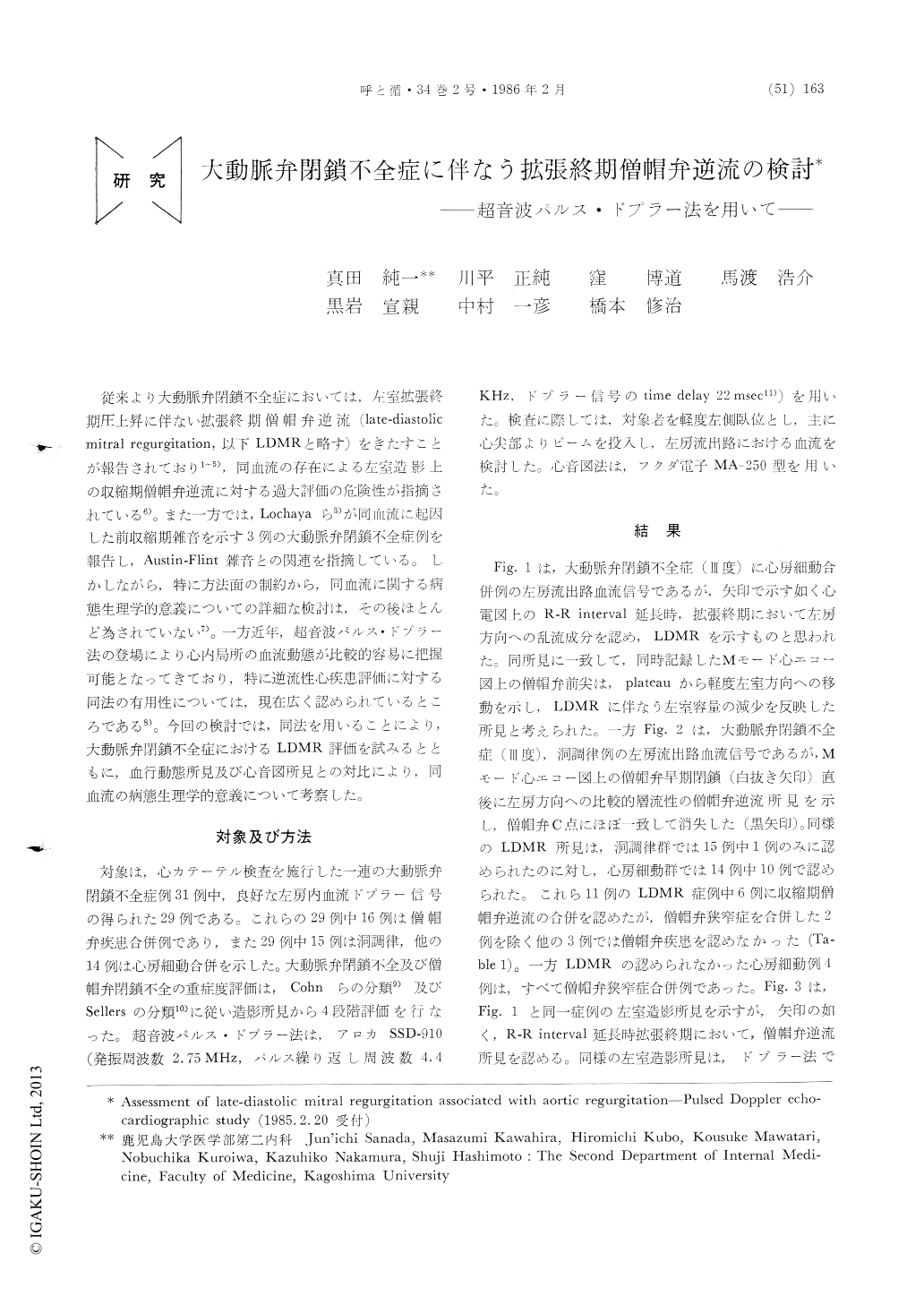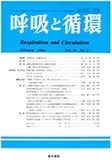Japanese
English
- 有料閲覧
- Abstract 文献概要
- 1ページ目 Look Inside
従来より大動脈弁閉鎖不全症においては,左室拡張終期圧上昇に伴ない拡張終期僧帽弁逆流(late-diastolicmitral regurgitation,以下LDMRと略す)をきたすことが報告されており1〜5),同血流の存在による左室造影上の収縮期僧帽弁逆流に対する過大評価の危険性が指摘されている6)。また一方では.Lochayaら3)が同血流に起因した前収縮期雑音を示す3例の大動脈弁閉鎖不全症例を報告し,Austin-Flint雑音との関連を指摘している。しかしながら,特に方法面の制約から,同血流に関する病態生理学的意義についての詳細な検討は,その後ほとんど為されていない7)。一方近年,超音波パルス・ドプラー法の登場により心内局所の血流動態が比較的容易に把握可能となってきており,特に逆流性心疾患評価に対する同法の有用性については,現在広く認められているところである8)。今回の検討では,同法を用いることにより,大動脈弁閉鎖不全症におけるLDMR評価を試みるとともに,血行動態所見及び心音図所見との対比により,同血流の病態生理学的意義について考察した。
In aortic regurgitation, the existence of late-dias-tolic mitral regurgitation (LDMR) has been point-ed out by some investigators, indicating the possi-bility of overestimation for systolic mitral regurgi-tation on left ventriculography. The pathophysiolog-ical significance of this flow, however, has been less analyzed because of the methodological limi-tation. In this study, LDMR was assessed by using pulsed Doppler echocardiography in 29 cases with aortic regurgitation that were performed cardiac catheterization.
LDMR was observed in 10 of 14 cases with at-rial fibrillation at the cardiac cycle in which R-R interval showed prolongation, and in one of 15 cases with sinus rhythm. In 7 of 11 cases with LDMR, its existence was also clarified by left ventriculography. Moreover, in 3 of 11 cases in which left ventricular and pulmonary arterial wedge pressure was recorded simultaneously, late-diastolic reversal of the pressure gradient was observed, indicating the occurrence of the reversal of atrio-ventricular pressure gradient. Although mitral valve diseases were observed in 8 of these 11 cases, the other 3 cases had normal mitral valve. These results suggested that both the existence of premature mitral valve closure that was caused by the delay of following left ventricular contraction owing to R-R interval prolongation, and the appearance of the reversal of left atrial-left ventri-cular pressure gradient that was induced by left ventricular overfilling, had the important role for the occurrence of LDMR. On the other hand, on phonocardiography, apical late diastolic murmur was observed at the cardiac cycle in which R-R interval was prolonged, that was believed to be caused by LDMR.
In conclusion, pulsed Doppler echocardiography is useful for assessing LDMR in aortic regurgita-tion, and in relieving overestimation of systolic mit-ral regurgitation on left ventriculography that is induced by LDMR because phasic analysis can be accomplished easily by using this method.

Copyright © 1986, Igaku-Shoin Ltd. All rights reserved.


